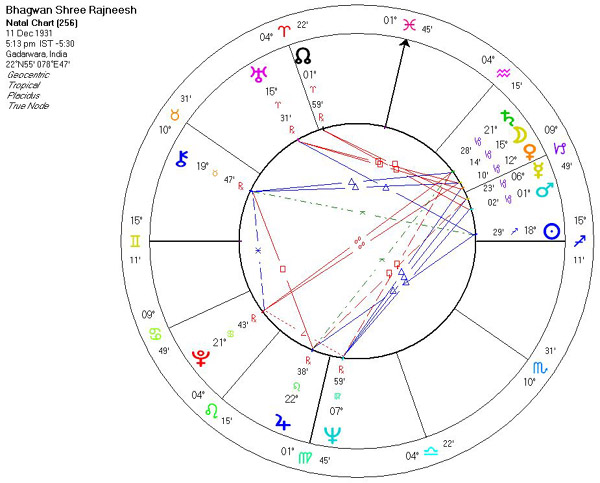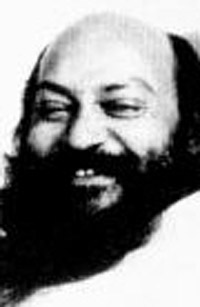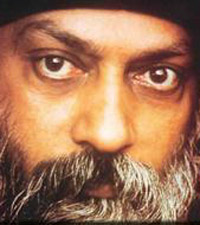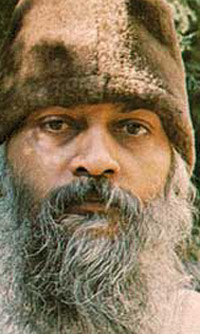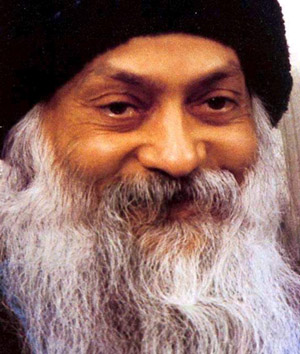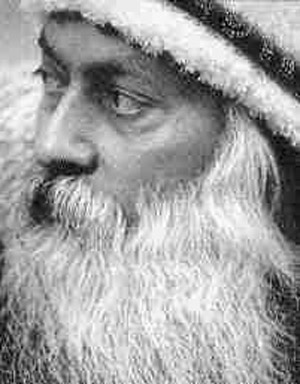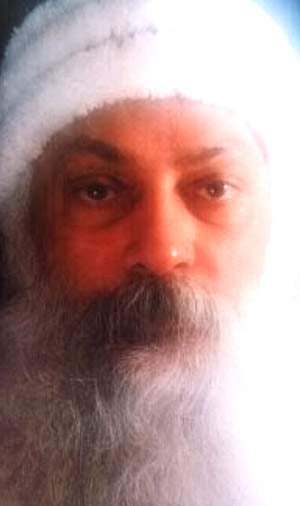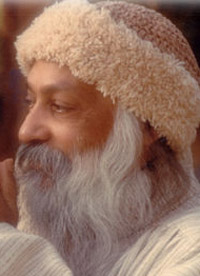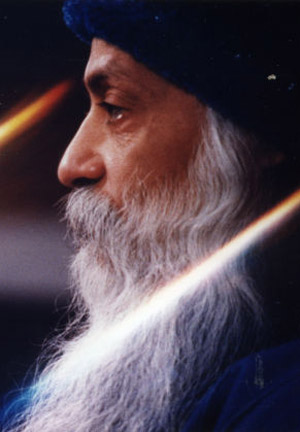Copyright Michael D. Robbins 2005
Astro-Rayological
Interpretation & Charts
Quotes
Biography
Iimages and Physiognomic Interpretations
“The moment a child is born, the mother is also born. She never existed before. The woman existed, but the mother, never. A mother is something absolutely new.”
“I don't want anybody to stand between the individual and existence. No prayer, no priest -- you alone are enough to face the sunrise.”
“ I say unto you that suffering is not holding you, you are holding suffering....”
“ The only way to know something absolutely is to experience it for yourself; anything less is theory, speculation, and belief. ”
“ I am here to seduce you into a love of life; to help you to become a little more poetic; to help you die to the mundane and to the ordinary so that the extraordinary explodes in your life. ”
(Gemini Ascendant. Uranus in Aries trine Sun)“ I am not a logician. I am an existentialist. I believe in this meaningless, beautiful chaos of existence, and I am ready to go with it wherever it leads.”
“Logic ridicules love, and love smiles knowingly at the whole foolishness of logic. ”
“ I am not a philosopher who is trying to make a system of thought. I am a mystic who is trying to convey the mysteries that have become available to me. I will confuse you. ”
(Neptune trine Mercury, Venus, Moon & Mars)“If there is pain, use it as an awareness, as meditation, as a sharpening of the soul. And when pleasure is there, use it as a droning, as a forgetfulness. Both are ways to reach God. One is to remember yourself totally, and one is to forget yourself totally. ”
(Moon conjunct Saturn & Venus in Capricorn)“ I have never been a serious person.... I am not serious at all because existence is not serious. It is so playful, so full of song and so full of music and so full of subtle laughter. It has no purpose; it is not business-like. It is pure joy, sheer dance, out of overflowing energy. ”
(Sun in Sagittarius)“ I am saying something about the ineffable. I am saying something about the ultimate mystery. You can understand it, yet you can never understand it totally. It is elusive, it escapes. It is within reach, but it is not within grasp. You are always coming closer and closer to it, but you never arrive. And the day you arrive, then you are no more there; the distinction between the seeker and the sought disappears. Then you are it. That art thou -- then you are it! ”
“ Laughter relaxes. And relaxation is spiritual.”
“The world is not a problem; the problem is your unawareness”
“ Let this become your key - next time when anger comes, just watch it. Don't say, “I am angry.” Say, “Anger is there and I am watching it.” And see the difference! The difference is vast. Suddenly you are out of the grip of anger. If you can say, “I am just a watcher, I am not anger,” you are out of the grip.”
(Pluto opposition Moon)“Pleasure is a sort of oblivion, a forgetfulness. Pain is remembrance, you cannot forget pain.”
“I believe that the very effort to convert anybody is violence, it is interfering in his individuality, in his uniqueness, into his freedom. ”
“ I am all in favor of the skeptical mind. Do not believe anything unless you have experienced it. Do not believe anything - go on questioning, however long it takes. ”
(Jupiter in 3rd house)“But the TRUTH is, I AM, therefore I think! We exist first and then express ourselves as bodies in physical dimension.”
“ I would simply like to be forgiven and forgotten. There is no need to remember me. The need is to remember yourself!”
“When sadness comes, just sit by the side and look at it and say, “I am the watcher, I am not sadness,” and see the difference. Immediately you have cut the very root of sadness. It is no more nourished. It will die of starvation. We feed these emotions by being identified with them.”
“ ... And listen carefully, when you don't need the other, you can love. And that love will not bring misery.”
(Gemini Ascendant)“ I have been misunderstood perhaps more than anyone else ever, but it has not affected me, for the simple reason that there is no desire to be understood. It is their problem if they don't understand, it is not my problem. If they misunderstand, it is their problem and their misery. I am not going to waste my sleep because millions of people are misunderstanding me. ”
“Don't look for God in the sky; look within your own body. ”
“Laughter brings you to reality as it is. The world is a play of God, a cosmic joke. And unless you understand it as a cosmic joke you will never be able to understand the ultimate mystery.”
“The stronger a person's "I" is, the smaller his capacity to become one with anybody. The "I" is a wall in between; it proclaims itself. Its proclaimation is : "You are you and I am I. There is a distance between the two." Then no matter how much "I" love you, "I" may embrace you to my bosom, still we are two. No matter how closely we meet, still there is a gap in between - I am me and you are you. That is why even the most intimate experiences fail to bring people close. Bodies sit close to each other but the persons remain far away. As long as there is the "I" inside the sense of "the other" cannot be destroyed.
Sartre has made a wonderful statement: "The other is hell." But he didn't explain why the other is "the other." The other is "the other" because I am "I". And as long as I am "I," the world around is "the other" - separate and apart. And as long as there is separateness there can be no experience of love.”“ We are all one. In the human form we are pioneers embarked on a wonderful journey, exploring and experiencing the physical world.”
“When you become good at the art of letting sufferings go, then you'll come to realize what you were dragging around with you. And for that, no one else other than you was responsible.”
“I would like you to relate with people, to love, to move in millions of relationships -- because they enrich -- and yet remain capable of closing your doors and sometimes having a holiday from all relationship... so that you can relate with your own being also. ”
(Gemini Ascendant)“You are the watcher; the mind is the watched. It is a beautiful mechanism, one of the most beautiful mechanisms that nature has given to you. So you can use it when needed for factual memory -- for phone numbers, for addresses, for names, for faces....It is a good tool, but that's all it is. It need not sit upon you continuously twenty-four hours a day. Even while you are sleeping, it is sitting on your chest torturing you, giving you nightmares. All kinds of relevant and irrelevant thoughts go on and on.”
“When you are working in your office, I am not telling you to be a no-mind. When you are working in your shop or in the factory, I am not saying to be a no-mind. I am saying be perfectly a mind. Use the mind but don't carry it continuously, twenty-four hours, day in and day out, with yourself. Don't go on dragging it. Use it as you use a chair. You don't go on carrying your chair everywhere, wherever you go, just because you may need it.”
“ I am nobody's disciple. I don't belong to any belief system. I love people from all over the world and I never compare them. They are all unique, a Zarathustra is a Zarathustra, a Mahavira is a Mahavira, a Buddha is a Buddha, a Jesus is a Jesus, a Moses is a Moses... they are so unique that you should not make one of them a criterion that everybody else has to fit with. ”
“The true love is very momentary – but what a moment.”
“ I am not going to give you a destination. I can only give you a direction - awake, throbbing with life, unknown, always surprising, unpredictable.”
(Sun in Sagittarius trine Uranus in Aries)“The whole existence is simple, but man's mind has been cultivated, conditioned, educated, programmed in such a way that the simplest thing becomes crooked. The moment it reaches to your mind it is no longer simple. The mind starts interpreting it, finding things in it which are not there, ignoring things which are there. ”
“Enlightenment will be now the beginning, not the end. Beginning of a non-ending process in all dimensions of richness. ”
“Move into the vast, into the infinite, and by and by, learn to trust it. Leave yourself in the hands of life. ”
“When you don't have a mind, then you have a heart. When you don't have a mind only then your heart starts pulsating, then you have love. No-mind means love. Love is my message. ”
(Gemini Ascendant)“Your mind is continuously projecting – projecting itself”
“We live the perfect process created by the Universe, and we do that perfectly—whether we realize it or not. ”
“ Trust is an absurd phenomenon, logically absurd. That's why logic always says love is blind, although love has its own eyes, far more deep-going...still, to logic it is blind.”
“Laughter brings you to the earth, brings you down from your stupid ideas of being holier-than-thou.”
“ Always remember that I am a poet, not a philosopher. Remember always that I am not a missionary, but a musician playing on the harp of your heart. ”
“ I'm not going to give you a map. I can give you only a great passion to discover. Yes, a map is not needed; great passion, great desire to discover is needed. Then I leave you alone. Then you go on your own.”
“You don't need somebody to interpret for you what a beautiful sunrise it is. ”
“ I am not here to help you. You may be here to be helped, but I am not. I am just enjoying my thing. I am doing my thing. ”
“ Up to now, nobody has said, that there is anything beyond enlightenment. That's why I say, I am a milestone.”
“The truth is that existence wants your life to become a festival...because when you are unhappy, you also throw unhappiness all around. ”
“ We where created to discover Love - the only reality. ”
“This is the mysterious world which is available to you if you can pass the jungle of questions and doubts and reach into the clear, where there are no questions and doubts, and no answers either. Just you are in utter silence, with immense clarity, with tremendous sharpness.”
“So when I say it I mean it, and it is not a hypothesis. I have experienced It that way. The mind can be used and can be put aside. It is an instrument, a very beautiful instrument; no need to be so obsessed with it. No need to be so fixed, fixated with it. Then it becomes a disease.”
“From now on, do whatsoever you want, but do it with awareness. Easy and natural are the keys. Don't repress anything, be your own self. ”
“ The answer is in yourself. I just tell you the potential of your being. ”
“We exist solely because we have a body and a mind – a mind that arises out of the body. If this were true, we would cease to exist after our body was gone.”
“ My vision of a real humanity is of pure individuals relating to each other, but not tied in any relationship. They will be loving to each other, but not being possessive of each other. They will be sharing with each other all their joys and all their blessings, but never even in their dreams thinking of dominating, thinking of enslaving the other person.”
“My vision of a real humanity is of a world consisting not of families, not of nations, not of races, but only of individuals. ”
“I conceive of a world without poverty, without classes, without nations, without religions, without any kind of discrimination. I conceive of a world which is one, a humanity which is one, a humanity which shares everything -- outer and inner -- a deep spiritual brotherhood. ”
(Uranus in 11th house)“ I am not serious! What I am saying to you is said out of playfulness. It is more a gossiping than a gospel. ”
“But your mind is very complex, very tricky. It makes simple things complicated. -- that's its work. And for centuries it has been trained for only one thing, to make things so complicated that your life becomes impossible.”
“My whole effort is to help you release the energy called love-intelligence. If love-intelligence is released, you are healed.”
“I am happy whatever you become; just remain truthful and sincere to your own being. ”
“ I am here simply to make you alert and aware. That is, to be here now - with all the insecurity that life is; with all the uncertainty that life is; with all the danger that life is. ”
“ As far as I am concerned, I have never planned anything; I have simply lived, wondering what is going to happen next. ”
“ A person can use his mind when working on matter; then logic is a great instrument. And the same person can put aside the mind when he moves into his meditation chamber and moves into the no-mind. Because mind is not you -- it is just an instrument just like my hand, just like my legs.”
“If religiousness can be reduced to one single thing, it is non-identification. ”
“Going beyond needs, demands, desires, love becomes a very soft sharing, a great understanding.”
Rajneesh Chandra Mohan Jain (December 11, 1931 - January 19, 1990), better known during the 1970s and 1980s as Bhagwan Shree Rajneesh and later taking the name Osho, was an Indian spiritual teacher. He lived in India and in other countries including, for a period, the United States, and inspired the Osho movement, a controversial spiritual and philosophical movement.
Osho's philosophy
Osho claimed that the greatest values in life are (in no specific order) awareness, love, meditation and laughter. He said that enlightenment is everyone's natural state[1], but that one is distracted from realizing it – particularly by the human activity of thought, as well as by emotional ties to societal expectations, and consequent fears and inhibitions.He was a prolific speaker (both in Hindi and English) on various spiritual traditions including those of Buddha, Krishna, Guru Nanak, Jesus, Socrates, Zen masters, Gurdjieff, Sufism, Hassidism and many others. He attempted to ensure that no "system of thought" would define him, since he believed that no philosophy can fully express the truth.
An experienced orator, he said he spoke to convey his message, but that his only reason was to convince his listeners to start on a path of meditation, glimpses of which, according to him, could be experienced in the gaps between his words[2]:
I am making you aware of silences without any effort on your part. My speaking is being used for the first time as a strategy to create silence in you.
This is not a teaching, a doctrine, a creed. That’s why I can say anything. I am the most free person who has ever existed as far as saying anything is concerned. I can contradict myself in the same evening a hundred times. Because it is not a speech, it has not to be consistent. It is a totally different thing, and it will take time for the world to recognize that a tremendously different experiment was going on.
Just a moment … when I become silent, you become silent. What remains is just a pure awaiting. You are not making any effort; neither am I making any effort. I enjoy talking; it is not an effort.
I love to see you silent. I love to see you laugh, I love to see you dance. But in all these activities, the fundamental remains meditation.[3]
He was often called the "sex guru" after some speeches in the late 1960s on sexuality. These were later compiled under the title From Sex to Superconsciousness. According to him, "For Tantra everything is holy, nothing is unholy"[4], and all repressive sexual morality was self-defeating, since one could not transcend sex without experiencing it thoroughly and consciously. In 1985, he told the Bombay Illustrated Weekly,
“ I have never been a celibate. If people believe so, that is their foolishness. I have always loved women – and perhaps more women than anybody else. You can see my beard: it has become gray so quickly because I have lived so intensely that I have compressed almost two hundred years into fifty.[5] ”
Osho said he loved to disturb people – only by disturbing them could he make them think.[6] Accordingly, his discourses were peppered with offensive jokes[7] and outrageous statements lampooning key figures of established religions such as Hinduism, Jainism or Christianity. Concerning the virgin birth, for example, he said that Jesus was clearly a bastard, since he was not Joseph's biological son, and that the Holy Ghost was a rapist – or God's genitalia."[8] An attempt on his life was made by a Hindu fundamentalist in 1980. Osho, however, said that the only thing he was serious about in his discourses were the jokes – they were the main thing, and everything else was spiritual gossip.[9]
Osho on meditation
According to Osho, meditation is a state of watchfulness that has no ego fulfillment in it, something that... happens when you are in a state of not-doing. And that is the question: how to do that non-doing? If you ask how, you have missed the point, because "how" means doing. ... You will have to understand that no doing is going to help. In that very understanding, non-doing happens.[10]
He said it is very difficult for modern man to just sit and be in meditation, so he devised so-called Active Meditation techniques to prepare the ground. Some of these preparatory exercises can also be found in western psychological therapies (i.e. gestalt therapy), such as altered breathing, gibberish, laughing or crying. His most significant meditation techniques are known as "Dynamic Meditation", "Kundalini Meditation", "Nadabrahma", "Nataraj". They have a strong physical element. He said Dynamic Meditation was –
... absolutely necessary for the modern man ... If people are innocent there is no need for Dynamic Meditation. But if people are repressed, psychologically are carrying a lot of burden, then they need catharsis. So Dynamic Meditation is just to help them clean the place. And then they can use any method ... It will not be difficult. If they, right now, directly try, they will fail.[11]
He also reintroduced minimal parts of several traditional meditation techniques, stripped of what he saw as ritual and tradition, and retaining what he considered to be the most therapeutic parts. He believed that, given sufficient practice, the meditative state can be achieved and maintained while performing everyday tasks and that enlightenment is nothing but being continuously in a meditative state:
Nature has come to a point where now, unless you take individual responsibility, you cannot grow. More than this nature cannot do. It has done enough. It has given you life, it has given you opportunity; now how to use it, it has left up to you.
Meditation is your freedom, not a biological necessity. You can learn in a certain period of time every day to strengthen meditation, to make it stronger -- but carry the flavor of it the whole day.
First, while you are awake -- the moment you wake up, immediately catch hold of the thread of remaining alert and conscious, because that is the most precious moment to catch the thread of consciousness. Many times in the day you will forget -- but the moment you remember, immediately start being alert. Never repent, because that is a sheer wastage of time. Never repent, "My God, I forgot again!"
In my teachings there is no place for any repentance. Whatever has happened is gone, now there is no need to waste time on it. Catch hold again of the thread of awareness. Slowly, slowly you will be able to be alert the whole day -- an undercurrent of awareness in every act, in every movement, in everything that you are doing, or not doing. Something underneath will be continuously flowing.
Even when you go to sleep, leave the thread only at the last moment when you cannot do anything because you are falling asleep. Whatever is the last thing before you fall asleep will be the first thing when you wake up. Try it. Any small experiment will be enough to prove it. Just repeat your own name while you are falling asleep: half awake, half asleep, go on repeating ... Slowly, slowly you will forget repeating, because the sleep will grow more and more and the thread will be lost. It is lost only because you are asleep, but underneath your sleep it continues. That's why in the morning when you wake up and just look around, the first thing you will remember will be [the sound of your name]. You will be surprised: Why? What happened? You slept eight hours, but there has been an undercurrent.
And as things become deeper and clearer, even in sleep you can remember that you are asleep. Sleep becomes almost a physiological thing and your spirit, your being, becomes a flame of awareness, separate from it. It does not disturb your sleep; it simply makes your sleep very light. It is no more the sleep of the old days, when your house was on fire and you went on sleeping -- that was almost like a coma, you were so unconscious.
Your sleep will become thin, a very light layer, and your inside will remain alert. Just as it has been alert in the day, it will be even more alert in the night, finally, because you are so silent, so relaxed. The whole nuisance world becomes completely silent.
Patanjali, the first man in the world to write about meditation, says that meditation is almost like dreamless sleep, but with only one difference. In dreamless sleep you are not aware; in samadhi, in the ultimate state of meditation, there is just a little difference -- you are aware.[3]
Biographical notes
Osho was born Chandra Mohan Jain in Kuchwara, a small village in the Narsinghpur District of Madhya Pradesh state in India. At the time, an astrologer predicted that he might die before he was seven years old according to the birth chart.[12] His parents, who were Jains, sent him to be with his maternal grandparents until he was seven years old.Osho said this was a major influence on his growth because his grandmother gave him the utmost freedom and respect, leaving him carefree; without an imposed education or restrictions.
At seven years old he went back to his parents. He explained that he received a similar kind of respect from his paternal grandfather who was staying with them. He was able to be very open with his grandfather. His grandfather used to tell him, "I know you are doing the right thing. Everyone may tell you that you are wrong. But nobody knows which situation you are in. Only you can decide in your situation. Do whatsoever you feel is right. I will support you. I love you and respect you as well."[13]
He was a rebellious, but gifted student, winning the title of All-India Debating Champion.[1]
Osho said he became spiritually enlightened on 21 March 1953, when he was 21 years old. He said he dropped all effort and hope and after an intense seven-day process went out at night to a garden, where he sat under a tree:
The moment I entered the garden everything became luminous, it was all over the place – the benediction, the blessedness. I could see the trees for the first time – their green, their life, their very sap running. The whole garden was asleep, the trees were asleep. But I could see the whole garden alive, even the small grass leaves were so beautiful.
I looked around. One tree was tremendously luminous – the maulshree tree. It attracted me, it pulled me towards itself. I had not chosen it, god himself has chosen it. I went to the tree, I sat under the tree. As I sat there things started settling. The whole universe became a benediction.[14]
He finished his studies at D. N. Jain College and Saugar University, receiving a B.A. (1955) and an M.A. (1957) in Philosophy. He then taught philosophy, first at Raipur Sanskrit College, and then, until 1966, as a Professor at Jabalpur University. At the same time, he traveled throughout India, giving lectures critical of socialism and Gandhi, under the name Acharya (literally "teacher") Rajneesh. In 1964, he led his first meditation camp. He resigned from his teaching post in 1966.
In 1968, he offended Hindu leaders with his non-traditional views on sex; at the Second World Hindu Conference in 1969, he enraged Hindus by criticizing all organized religion and the very institution of priesthood.[2]
In 1969 a group of Osho's disciples established a foundation to support his work. They settled in an apartment in Mumbai where he gave daily discourses and received visitors. The number and frequency of visitors soon became too much for the place, overflowing the apartment and bothering the neighbours. A much larger apartment was found on the ground floor (so the visitors would not need to use the elevator, a matter of conflict with the former neighbours).
On September 26, 1970 he initiated his first disciple or sannyasin at an outdoor meditation camp, one of the large gatherings where he lectured and guided group meditations. His concept of neo-sannyas entailed wearing the traditional orange dress of ascetic Hindu holy men. However, his neo-sannyasins were not expected to follow an ascetic lifestyle.
From 1971, he was known as Bhagwan Shree Rajneesh. Shree means Sir; the Sanskrit word Bhagwan, which can also be used to refer to an aspect of the supreme being, means "blessed one"[3]. It is commonly used in India as a respectful form of address for spiritual teachers[4][5][6][7]
The new apartment also proved insufficient and the climate of Mumbai was deemed very bad for his delicate health. So, in 1974, on the 21st anniversary of his enlightenment, a caravan of cars departed from the Mumbai apartment to the newly purchased property in Koregaon Park, in the city of Pune, a four hour trip from Mumbai. Pune had been the secondary residence of many wealthy families from Mumbai because of the cooler climate (Mumbai lies in a coastal wetland, hot and damp, Pune is inland and much higher, so it is drier and cooler).
The two adjoining houses and 6 acres of land became the nucleus of an Ashram and those two buildings are still at the heart of the present-day Osho International Meditation Resort. This space allowed for the regular audio and video recording of his discourses and, later, printing for worldwide distribution, which allowed him to reach far larger audiences internationally.
During one of his discourses in 1980, an attempt on his life was made by a Hindu fundamentalist.[8]
Osho taught at the Pune Ashram from 1974 to 1981.
On 1 May 1981, having discoursed daily for nearly 15 years, Osho entered a three-and-a-half-year period of self-imposed public silence[9], and satsangs (silent sitting, with some readings from his works and music) took the place of his discourses.[15]
In mid-1981, Osho went to the United States in search of better medical care (he suffered from asthma, diabetes and severe back problems). His followers bought (for US$6 million) a ranch in Wasco County, Oregon, previously known as "The Big Muddy", but later renamed Rajneeshpuram where they settled for the next several years.
Osho stayed in Rajneeshpuram as the commune's guest, living in a trailer[16][10]. Over the coming years, he acquired fame for the large number of Rolls-Royces his followers bought for his use (in the end, they numbered more than 90).
Osho ended his period of silence in October 1984. In July 1985, he resumed his daily public discourses in the commune's purpose-built, two-acre meditation hall. According to statements he made to the press, he did so against the wishes of Ma Anand Sheela, his secretary and the commune’s top manager.[17]
Increasing conflicts with neighbours and the state of Oregon, as well as serious and criminal misconduct by the commune's management (including conspiracy to murder public officials, wiretapping within the commune, the attempted murder of Osho's personal physician, and a bioterrorism attack on the citizens of The Dalles, Oregon, using salmonella), made the position of the Oregon commune untenable. When the commune's management team guilty of these crimes left the US in September 1985, fleeing for Europe, Osho convened a press conference and called on the authorities to undertake an investigation[11].
In late October 1985, Osho himself was arrested in North Carolina as he was allegedly fleeing the U.S. Accused of minor immigration violations, Osho, on advice of his lawyers, entered an "Alford plea" – through which a suspect does not admit guilt, but does concede there is enough evidence to convict him – and was given a suspended sentence on condition that he leave the country.
Osho then began a world tour, speaking in Nepal, Greece and Uruguay, among others. Being refused visas by several dozen countries, he returned to India in July 1986, and in January 1987, to his old Ashram in Pune, India. He resumed discoursing there.
In 1989, he said he no longer wished to be referred to as Bhagwan Shree Rajneesh, and took the name Osho.
On January 19, 1990, four years after his arrest, Osho died, aged 58, with heart failure being the publicly reported cause. Prior to his death, Osho had expressed his belief that his rapid health decline was caused by some form of poison administered to him by the U.S. authorities during the twelve days he was held without bail in various U.S. prisons. In a public discourse on 6 November 1987, he said that a number of doctors that were consulted had variously suspected thallium, radioactive exposure, and other poisons to account for his failing health:
“ "It does not matter which poison has been given to me, but it is certain that I have been poisoned by Ronald Reagan's American government" [18]. ”
His ashes were placed in his newly built bedroom in one of the main buildings (LaoTsu House) at his last place of residence, his Ashram in Pune, India. The epitaph reads, "OSHO. Never Born, Never Died. Only Visited this Planet Earth between Dec 11 1931 – Jan 19 1990."
Today, excerpts and quotes from Osho's works appear regularly in the Times of India newspaper.[12] [13] His Ashram in Pune has become the Osho International Meditation Resort, a popular tourist destination[14].
Osho is one of only two authors whose entire works have been placed in the Library of India's National Parliament in New Delhi. The other is Mahatma Gandhi.[15]
Controversy and criticism
Osho had a penchant for courting controversy.[19]His libertarian views on sex, and the resulting unrestrained behaviour of sannyasins in his Poona ashram[20], at times caused considerable consternation, dismay and panic among people holding different views on these matters, both in India and the U.S.[21] A number of Western daily papers routinely, and falsely[22], claimed that Bhagwan, a traditional title for spiritual teachers in India, meant "Master of the Vagina", and focused their reporting on sexual topics.
Osho claimed that he was a rich man's guru, and that material poverty was not a spiritual value. He was photographed wearing sumptuous clothing and hand-made watches.[23] He drove a different Rolls Royce[16] each day – his followers wanted to buy him 365 of them, one for each day of the year[24]. Publicity shots of the Rolls-Royces (more than 90 in the end) appeared in the press. Yet Osho himself said about the Rolls Royce collection:
And do you think a certain simple law of diminishing returns...? If you get one Rolls Royce, you are immensely happy. I have ninety. What difference does it make to me that in the garage there are ninety-one? The number of that one will come in three months time only for one day for ninety minutes. What does it matter to me? For that I will commit suicide?
I have never gone to the garage. I have never looked into the garage, how many cars are there, what kind of cars are there. And that too belongs to a trust.
I had declared that all those cars should be given to the commune. They are basically commune property. I don't own anything. For thirty years I have not owned a single cent.[25]
In his discourses, Osho consistently attacked organizational principles embraced by societies around the world – the family, nationhood, religion. He condemned priests and politicians with equal venom[26], and was in turn condemned by them.
In a 1998 preface to Osho's book Books I Have Loved, his personal dentist, Swami Devageet, stated that Osho dictated three books while undergoing dental treatment under the influence of nitrous oxide (laughing gas): Glimpses of a Golden Childhood, Notes of a Madman, and Books I Have Loved. This led to widespread allegations that Osho was addicted to nitrous oxide gas. In addition, on the American CBS television show 60 Minutes, his former secretary, Ma Anand Sheela, claimed that Osho took sixty milligrams of Valium every day.
When questioned by journalists about the allegations of daily Valium and nitrous oxide use, Osho categorically denied both, describing the allegations as "absolute lies"[27].
1931 - 1953 Early Years
December 11,1931: Osho is born in Kuchwada, a small village in the state of Madhya Pradesh, central India.
He is the eldest of eleven children of a Jaina cloth merchant. Stories of His early years describe Him as independent and rebellious as a child, questioning all social, religious and philosophical beliefs. As a youth He experiments with meditation techniques.
March 21, 1953: \o becomes enlightened at the age of twenty-one, while majoring in philosophy at D.N. Jain college in Jabalpur.
1953 - 1956 Education
1956: Osho receives His M.A. from the University of Sagar with First Class Honors in Philosophy.
He is the All-India Debating Champion and Gold Medal winner in His graduating class.
1957-1966 University Professor and Public Speaker
1957: Osho is appointed as a professor at the Sanskrit College in Raipur.
1958: He is appointed Professor of Philosophy at the University of Jabalpur, where He taught until 1966.
A powerful and passionate debater, He also travels widely in India, speaking to large audiences and challenging orthodox religious leaders in public debates.
1966: After nine years of teaching, He leaves the university to devote Himself entirely to the raising of human consciousness. On a regular basis, He begins to address gatherings 20,000 to 50,000 in the open-air maidans of India’s major cities. Four times a year He conducts intense ten-day meditation camps.
In 1970, the 14th of April, He introduces His revolutionary meditation technique, dynamic Meditation, which begins with a period of uninhibited movement and catharsis, followed by a period of silence and stillness. Since then this meditation technique has been used by psychotherapists, medical doctors, teachers and other professionals around the world .
1969 - 1974 Mumbai Years
Late 1960’s: His Hindi talks become available in English translations.
1970: In July, 1970, He moves to Mumbai, where He lives until 1974.
1970: Osho - at this time called Bhagwan Shree Rajneesh - begins to initiate seekers into Neo-Sannyas or discipleship, a path of commitment to self-exploration and meditation which does not involve renouncing the world or anything else. Osho’s understanding of ‘Sannyas’ is a radical departure from the traditional Eastern viewpoint. For Him it is not the material world that needs to be renounced but our past and the conditionings and belief systems that each generation imposes on the next. He continues to conduct meditation camps at Mount Abu in Rajasthan but stops accepting invitations to speak throughout the country. He devotes his energies entirely to the rapidly expanding group of sannyasins around Him.
At this time, the first Westerners begin to arrive and to be initiated into Neo-Sannyas. Among them are leading psychotherapists from the human potential movement in Europe and America, seeking the next step in their own inner growth. With Osho they experience new, original meditation techniques for contemporary man, synthesizing the wisdom of the East with the science of the West.
1974 - 1981 Poona Ashram
During these seven years He gives a 90 minutes discourse nearly every morning, alternating every month between Hindi and English. His discourses offer insights into all the major spiritual paths, including Yoga, Zen, Taoism, Tantra and Sufism. He also speaks on Gautam Buddha, Jesus, Lao Tzu, and other mystics. These discourses have been collected into over 600 volumes and translated into 50 languages.
In the evenings, during these years, He answers questions on personal matters such as love, jealousy, meditation. These ‘darshans’ are compiled in 64 darshan diaries of which 40 are published.
The commune that arose around Osho at this time offers a wide variety of therapy groups which combine Eastern meditation techniques with Western psychotherapy. Therapists from all over the world are attracted and by 1980 the international community gained a reputation as ‘ the world’s finest growth and therapy center.’ One hundred thousand people pass through its gates each year.
1981: He develops a degenerative back condition. In March 1981, after giving daily discourses for nearly 15 years, Osho begins a three-year period of self-imposed public silence. In view of the possible need for emergency surgery, and on the recommendation of His personal doctors, He travels to the U.S. This same year, His American disciples purchase a 64,000-acre ranch in Oregon and invite Him to visit. He eventually agrees to stay in the U.S. and allows an application for permanent residence to be filed on His behalf.
1981 - 1985 Rajneeshpuram
A model agricultural commune rises from the ruins of the central Oregonian high desert. Thousands of overgrazed and economically unviable acres are reclaimed. The city of Rajneeshpuram is incorporated and eventually provides services to 5,000 residents. Annual summer festivals are held which draw 15,000 visitors from all over the world. Very quickly, Rajneeshpuram becomes the largest spiritual community ever pioneered in America.
Opposition to the commune and new city keeps pace with its success. Responding to the anti-cult fervor which pervades all levels of American society during the Reagan years, local, state and federal politicians make inflammatory speeches against the Rajneeshees. The Immigration and Naturalization Service (INS), the Federal Bureau of Investigations (FBI), the Treasury Department, and the Alcohol, Tobacco and Firearms Agency (ATF) are only a few of the agencies spending millions of dollars in taxpayers’ money while harassing the commune with unwarranted and fruitless investigations. Similar costly campaigns are conducted in Oregon.
October 1984: Osho ends three and one half years of self-imposed silence.
July 1985: He resumes His public discourses each morning to thousands of seekers gathered in a two-acre meditation hall.
Sept. - Oct. 1985: The Oregon Commune is Destroyed
September 14: Osho’s personal secretary Ma Anand Sheela and several members of the commune’s management suddenly leave, and a whole pattern of illegal acts they have committed - including poisoning, arson, wiretapping, and attempted murder - are exposed. Osho invites law enforcement officials to investigate Sheela’s crimes. The authorities, however, see the investigation as a golden opportunity to destroy the commune entirely.
October 23: A U.S. federal grand jury in Portland secretly indicts Osho and 7 others on relatively minor charges of immigration fraud.
October 28: Without warrants, federal and local officials arrest at gun point Osho and others in Charlotte, North Carolina. While the others are released, He is held without bail for twelve days. A five-hour return plane trip to Oregon takes four days. En route, Osho is held incommunicado and forced to register under the pseudonym, David Washington, in the Oklahoma County jail. Subsequent events indicate that it is probable that He was poisoned with the heavy metal thallium while in that jail and the El Reno Federal Penitentiary.
November: Emotions and publicity swell around Osho’s immigration case. Fearing for His life and the well-being of sannyasins in volatile Oregon, attorneys agree to an Alford Plea on two out of 35 of the original charges against Him. According to the rules of the plea, the defendant maintains innocence while saying that the prosecution could have convicted him. Osho and His attorneys maintain His innocence in the court. He is fined $400,000 and is deported from America.
Among others, U.S. Attorney in Portland, Charles Turner, publicly concedes that the government was intent on destroying Rajneeshpuram.
1985 - 1986 World TourJanuary-February: He travels to Kathmandu, Nepal and speaks twice daily for the next two months. In February, the Nepalese government refuses visas for His visitors and closest attendants. He leaves Nepal and embarks on a world tour.
February-March: At His first stop, Greece, he is granted a 30-day tourist visa. But after only 18 days, on March 5, Greek police forcibly break into the house where He is staying, arrest Him at gun point, and deport him. Greek media reports indicate government and church pressure provoked the police intervention.
During the following two weeks He visits or asks permission to visit 17 countries in Europe and the Americas. All of these countries either refuse to grant Him a visitor’s visa or revoke His visa upon His arrival, and force Him to leave. Some refuse even landing permission for His plane.
March-June: On March 19 He travels to Uruguay. On May 14th the government has scheduled a press conference to announce that He will be granted permanent residence in Uruguay. Uruguay’s President Sanguinetti later admits that he received a telephone call from Washington, D.C. the night before the press conference. He is told that if Osho is allowed to stay in Uruguay, the six billion dollar debt Uruguay owes to the U.S. will be due immediately and no further loans will be granted. Osho is ordered to leave Uruguay on June 18th.
June-July: During the next month He is deported from both Jamaica and Portugal. In all, 21 countries had denied Him entry or deported Him after arrival. On July 29,1986, He returns to Mumbai, India.
1987 - 1989 Osho Commune InternationalJanuary 1987: He returns to the ashram in Pune, India, which is renamed Rajneeshdham.
July 1988: Osho begins, for the first time in 14 years, to personally lead the meditation at the end of each evening’s discourse. He also introduces a revolutionary new meditation technique called The Mystic Rose.
January-February 1989: He stops using the name "Bhagwan," retaining only the name Rajneesh. However, His disciples ask to call Him ‘Osho’ and He accepts this form of address. Osho explains that His name is derived from William James’ word ‘oceanic’ which means dissolving into the ocean. Oceanic describes the experience, He says, but what about the experiencer? For that we use the word ‘Osho.’ At the same time, He came to find out that ‘Osho’ has also been used historically in the Far East, meaning "The Blessed One, on Whom the Sky Showers Flowers."
March-June 1989: Osho is resting to recover from the effects of the poisoning, which by now are strongly influencing His health.
July 1989: His health is getting better and He makes two appearances for silent darshans during the Festival, now renamed Osho Full Moon Celebration.
August 1989: Osho begins to make daily appearances in Gautama the Buddha Auditorium for evening darshan. He inaugurates a special group of white-robed sannyasins called the "Osho White Robe Brotherhood." All sannyasins and non-sannyasins attending the evening darshans are asked to wear white robes.
September 1989: Osho drops the name "Rajneesh," signifying His complete discontinuity from the past. He is known simply as "Osho," and the ashram is renamed "Osho Commune International."
1990 Osho leaves His body
January 1990: During the second week in January, Osho’s body becomes noticeably weaker. On January 18, He is so physically weak that He is unable to come to Gautama the Buddha Auditorium. On January 19, His pulse becomes irregular. When His doctor inquires whether they should prepare for cardiac resuscitation, Osho says, "No, just let me go. Existence decides its timing." He leaves His body at 5 p.m. At 7 p.m. His body is brought to Gautama the Buddha Auditorium for a celebration, and is then carried to the burning ghats for cremation. Two days later, His ashes are brought to Osho Commune International and placed in His samadhi in Chuang Tzu Auditorium with the inscription:OSHO
Never Born
Never Died
Only Visited This Planet Earth Between
11 December 1931 - 19 January 1990
